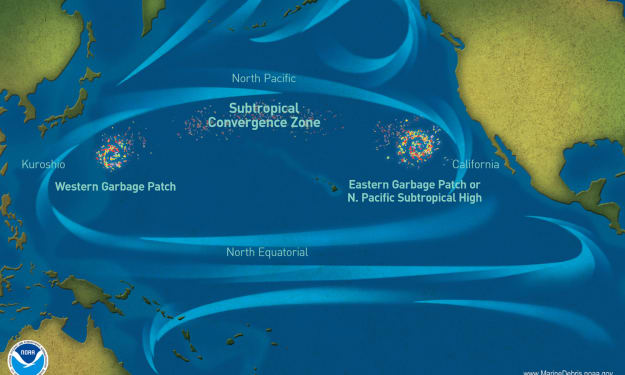The Secrets Beneath Our Feet
Exploring Earth's Mysterious Depths

Do you remember that diagram from elementary school showing Earth's layers? Turns out, it might not be as accurate as we once thought. But before we rush to explore other planets, shouldn't we first understand our own? Let's delve into what lies beneath our feet and the incredible discoveries made through one of humanity's deepest ventures: the Kola Superdeep Borehole.
The Quest to the Earth's Core
Contrary to sci-fi fantasies like "The Core," where humans travel to Earth's center, our deepest exploration has been far more limited. The Kola Superdeep Borehole, located in Russia's Kola Peninsula, reaches a staggering 7.5 miles into the Earth's crust—deeper than the deepest point in the ocean, which is approximately 6.8 miles deep. This man-made marvel was not just a feat of engineering but a testament to scientific curiosity and international competition.
Cold War Competition: Digging Deeper
During the Cold War era, the United States and the Soviet Union competed not only in outer space but also in a race to drill deeper into the Earth. The Americans initiated Project Mohole in 1961, aiming to reach the Mohorovičić discontinuity (or "Moho"), the boundary between the Earth's crust and mantle. However, due to funding issues, the project was short-lived, leaving the field open for the Soviets.
In 1970, the Soviet Union launched their ambitious drilling project, aiming to surpass all previous records. With the establishment of the Interdepartmental Scientific Council for the Study of the Earth's Interior and Superdeep Drilling, they embarked on what would become the Kola Superdeep Borehole.
Discoveries from the Depths
The Kola Superdeep Borehole wasn't just a hole in the ground; it was a gateway to groundbreaking discoveries. Scientists anticipated reaching the Earth's mantle, but their findings along the way reshaped geological understanding. They discovered that the transition from granite to basalt, previously thought to occur between 3 to 6 kilometers beneath the surface, extended much deeper—challenging existing theories of Earth's composition.
At around 4.3 miles deep, researchers encountered a surprising find: water. This discovery defied expectations, revealing water within rock cracks at significant depths, likely retained due to impermeable rock layers above. Even more astonishing were the microscopic fossils found in rocks dating back over 2 billion years, indicating ancient life forms thriving in environments once thought uninhabitable.
Challenges and Controversies
Despite its scientific successes, the Kola Superdeep Borehole faced insurmountable challenges. Temperatures at the bottom reached a scorching 356 degrees Fahrenheit, far exceeding initial estimates and posing serious operational risks. As drilling progressed, rock density increased, complicating further exploration and leading to technical difficulties.
In 1994, after years of exploration and significant scientific contributions, the project was abruptly halted. Speculations about drilling through to Hell or encountering tortured souls became the stuff of urban legends, overshadowing the project's real scientific achievements.
The Broader Implications of Deep Drilling
The Kola Superdeep Borehole has broad implications for our understanding of Earth’s geological processes. It provided invaluable data that has helped scientists refine their models of the Earth's structure. For instance, the discovery that the basalt layer extended deeper than previously thought has led to a re-evaluation of seismic reflection data, which is crucial for understanding tectonic activity and earthquake prediction.
Moreover, the finding of water at such depths has significant implications for our understanding of the Earth's hydrological cycle. It suggests that water might be stored much deeper within the Earth than previously believed, potentially affecting our understanding of geothermal energy resources and the origin of Earth’s water.
The presence of ancient microscopic fossils also offers clues about the conditions under which early life might have existed. These fossils suggest that life can thrive in extreme conditions, providing insights that could inform the search for life on other planets.
The Future of Deep Earth Exploration
The Kola Superdeep Borehole project may have ended, but it has paved the way for future deep drilling endeavors. Scientists continue to explore ways to reach deeper into the Earth, using advanced technology to overcome the challenges encountered by the Kola project. Projects like the International Continental Scientific Drilling Program (ICDP) aim to drill even deeper, enhancing our understanding of Earth's internal processes.
One promising area of research is the development of new drilling techniques that can withstand higher temperatures and pressures. Innovations such as diamond-tipped drill bits and advanced cooling systems could enable deeper and more efficient drilling, potentially unlocking further secrets of the Earth's interior.
Environmental and Ethical Considerations
While the pursuit of scientific knowledge is important, it’s crucial to consider the environmental and ethical implications of deep drilling projects. Drilling into the Earth’s crust can disrupt local ecosystems and pose risks to groundwater resources. As such, it’s essential for future projects to incorporate stringent environmental safeguards and conduct thorough impact assessments.
Moreover, ethical considerations around the exploitation of natural resources should guide our exploration efforts. The knowledge gained from deep drilling should be used to benefit humanity as a whole, promoting sustainable practices and ensuring that the resources of our planet are preserved for future generations.
The Journey Continues: Exploring Earth and Beyond
As we ponder the mysteries beneath our feet, it's clear that Earth still holds many secrets waiting to be uncovered. While space exploration captures our imaginations, understanding our own planet remains fundamental to scientific progress and environmental stewardship.
Join the Conversation
Would you venture to the Earth's core if given the chance, despite the risks? Share your thoughts and explore more about Earth's mysteries in the comments below. Your curiosity fuels our quest for knowledge.
About the Creator
Enjoyed the story? Support the Creator.
Subscribe for free to receive all their stories in your feed. You could also pledge your support or give them a one-off tip, letting them know you appreciate their work.





Comments
There are no comments for this story
Be the first to respond and start the conversation.